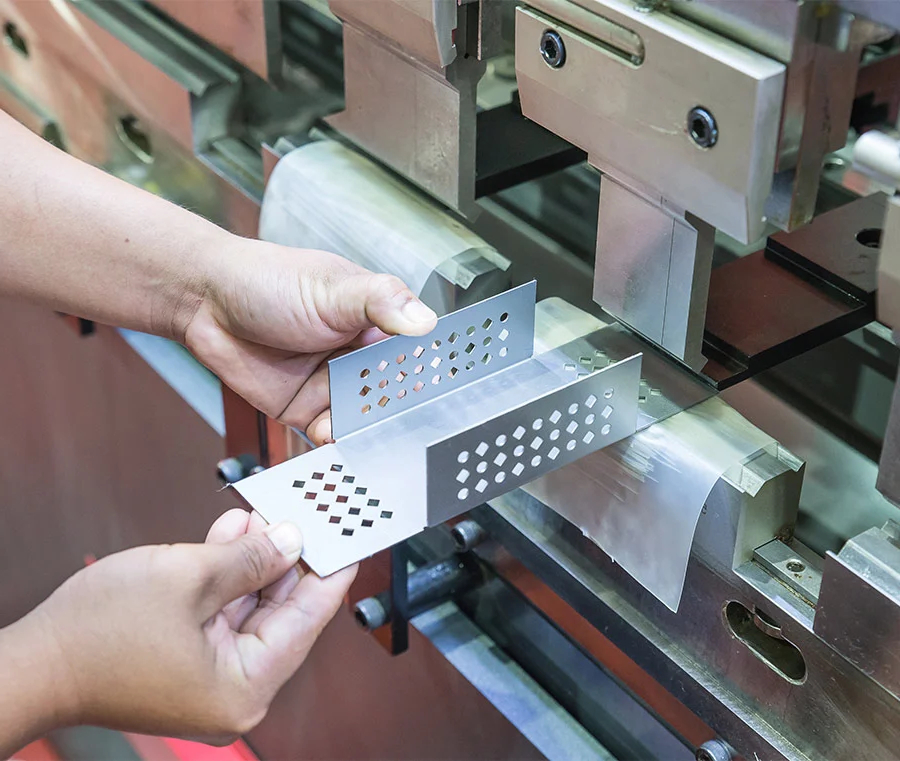The versatility of sheet metal cutting makes it possible to launch a successful and creative bespoke metal art business. Metal art, which offers longevity and visual appeal, is becoming more and more common in outdoor areas, commercial buildings, and houses.
If you’re passionate about metalworking and design, here’s a step-by-step guide on how to turn your skills into a thriving metal art business.
1. Refine Your Design Skills
The foundation of a successful metal art business lies in the ability to create unique, eye-catching designs. Begin by honing your skills in sheet metal cutting and design, whether it’s through formal education or self-taught methods. Focus on understanding design software (such as AutoCAD or Illustrator) to create precise plans for your pieces. Keep up with design trends in interior and exterior décor to ensure your art appeals to potential customers.
2. Choose Your Niche
Metal art covers a broad range of styles, from abstract sculptures to custom home décor pieces. Concentrating on a particular specialization will help you stand out in the market. Consider creating art for:
- Home Décor: Wall art, custom furniture, or decorative elements like shelves, mirrors, or lighting fixtures.
- Business Installations: Sculptures, signs, and branding materials for commercial spaces.
- Outdoor Art: Garden sculptures, gates, or custom signs for outdoor spaces like patios, gardens, and parks.
- Custom Gifts: Personalized pieces like nameplates, family crests, or commemorative plaques.
Finding a niche enables you to target the appropriate audience and modify your designs to suit their particular requirements.
3. Invest in Equipment
Starting a metal art business requires a significant investment in equipment, but it doesn’t have to be overwhelming. Essential tools for sheet metal fabrication and cutting include:
- CNC Plasma Cutter or Laser Cutter: For precise, detailed cuts on various metal sheets.
- Welding Equipment: For joining metal parts together and adding texture or dimension to your pieces.
- Bending and Shaping Tools: To create curves, angles, or more complex shapes.
- Finishing Tools: To give your work a polished, expert appearance, use tools like polishers, sanders, and grinders.
With a simple set of tools, you can begin small and progressively grow your business.
4. Set Up Your Workshop
Locate an appropriate area for material storage and safe work. This could be a home garage or a rented industrial unit, depending on your scale. Make sure the space has adequate ventilation and is furnished with protective equipment, such as welding masks, gloves, and eye protection. Proper lighting and a sturdy workbench are essential for precise, high-quality craftsmanship.
5. Build an Online Presence
In the modern digital age, recruiting clients requires an online presence. Create a professional website showcasing your work, including photos of previous projects, pricing information, and contact details. Display your designs on social media channels like Facebook, Instagram, and Pinterest to grow your audience. Building your brand and increasing visibility may be achieved through conducting promotions, publishing behind-the-scenes information, and interacting with fans.
6. Market Your Business
It’s time to advertise your firm when it has been established. Attend local art fairs, home shows, and craft markets to display your work and connect with potential clients. Collaborate with interior designers, landscapers, or real estate agents who may need custom pieces for their clients. Providing customized products and tailored designs will help you stand out from the competition and cultivate a devoted clientele.
7. Focus on Quality and Customer Service
To build a successful business, prioritize the quality of your work and exceptional customer service. Custom metal art pieces often carry a higher price tag, so it’s essential to exceed customer expectations. Provide alternatives for customization, be transparent about deadlines, and guarantee that every piece is expertly and carefully made. When customers are satisfied, they are more apt to recommend your services and seek you out for future projects.
Conclusion
Starting a customized metal art business can be a rewarding way to turn your passion for design and metalworking into a profitable enterprise. By focusing on unique designs, investing in quality equipment, and effectively marketing your services, you can create beautiful, durable art pieces for homes, businesses, and outdoor spaces.


